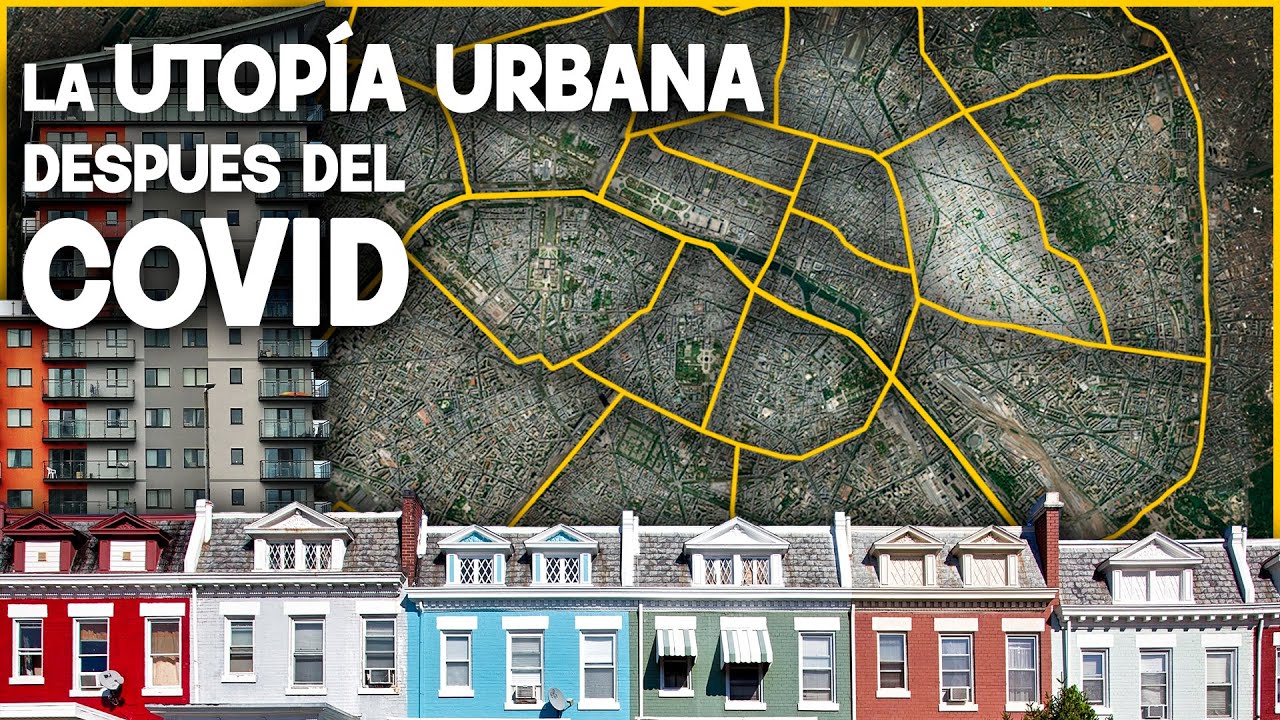15-Minute City: Urban Planning Solution To Climate Change | CNA Correspondent
Summary
TLDRThe video script explores the concept of the 15-minute city, a model where work, housing, schools, and leisure activities are all within a short walk or bike ride. Introduced by Paris-based Professor Carlos Moreno, the concept aims to reduce urban CO2 emissions and combat climate change. Paris has implemented various changes, such as expanding bike lanes and limiting car use. Other cities like Bristol and Singapore are adopting similar urban planning models, with goals of creating more livable, green, and sustainable environments. The script also discusses challenges like gentrification and public resistance.
Takeaways
- 🚶♂️ Cities should be designed for 15-minute access to work, housing, schools, and leisure.
- 🚲 Paris has been promoting cycling and bike lanes as a key part of its 15-minute city plan.
- 🚦 Some argue that bike lane construction leads to road congestion, but supporters highlight the benefits for cleaner, faster mobility.
- 🛵 Paris is regulating self-service electric mopeds, but public e-scooters are being banned due to safety concerns.
- 🌍 Climate change policies are central to the 15-minute city, aiming to reduce CO2 emissions from transportation and buildings.
- 🌳 Increasing tree canopy coverage can significantly lower heat-related deaths in urban areas.
- 🏫 Pedestrianizing streets around schools in Paris is aimed at ensuring safer environments for children.
- 🚇 Expanding public transport, like the Paris Metro and tram networks, is crucial for the 15-minute city model.
- 🛑 In the UK, cities like Bristol are experimenting with traffic management and livable neighborhoods as steps toward the 15-minute city.
- 🌱 Singapore has been implementing a version of the 15-minute city for decades, using master planning to optimize land use and ensure accessibility to green spaces.
Q & A
What is the 15-minute city concept?
-The 15-minute city concept is an urban planning strategy where all essential services such as work, housing, shops, schools, and leisure options are within a 15-minute walk or bike ride from a person's home.
Who is Professor Carlos Moreno and what is his role in the 15-minute city project?
-Professor Carlos Moreno is a Paris-based professor who envisioned the 15-minute city project. He is a driving force behind the concept, advocating for cities designed around the principle of having all daily necessities within a quarter-mile radius.
How does the increase in bike lanes in Paris relate to the 15-minute city project?
-The increase in bike lanes in Paris is a crucial part of the 15-minute city project, as cycling is promoted as a cheaper, healthier, and often faster alternative to driving, which supports the goal of making essential services easily accessible within a short distance.
What is the stance on public e-scooters in Paris according to the script?
-Public e-scooters will be banned in Paris from September 1st, as decided by the mayor after a referendum. The mayor's office considers them a danger to pedestrians and an eyesore, despite some seeing them as a crucial part of green travel.
How does the 15-minute city concept address climate change?
-The concept addresses climate change by reallocating road space to pedestrians and cyclists, investing in nature-based solutions, and promoting local economies, which all contribute to reducing CO2 emissions and fighting against climate change.
What role do trees play in the 15-minute city concept according to the Barcelona Institute for Global Health?
-According to the Barcelona Institute for Global Health, increasing tree canopy coverage to just under a third of a city could reduce heat-related deaths by nearly 40 percent.
What measures are being taken in Paris to ensure safe access to schools?
-Paris authorities have pedestrianized many streets in front of schools to provide more secure areas for children, aiming to make the city safer and more child-friendly.
How does the extension of the Paris Metro and tram network relate to the 15-minute city concept?
-The extension of the Paris Metro and tram network supports the 15-minute city concept by expanding public transport options, making it easier for residents to access various parts of the city quickly and reducing the need for personal vehicles.
How has the COVID-19 pandemic influenced the 15-minute city concept?
-The COVID-19 pandemic has been a game changer for the 15-minute city concept, as lockdowns restricted people to their neighborhoods, leading to more local shopping, working from home, and an increase in walking or cycling for transportation.
What is the global network of C40 cities and how does it relate to the 15-minute city concept?
-The global network of C40 cities is a group of the world's largest cities committed to addressing climate change. They have embraced the 15-minute city concept as the new backbone for developing urban policy post-pandemic, focusing on promoting carbonized mobilities, pedestrian and cycling infrastructure, and local economies.
What is the Bristol pilot scheme mentioned in the script and how does it relate to the 15-minute city concept?
-The Bristol pilot scheme is a multi-million dollar initiative to create livable neighborhoods by limiting traffic and improving pedestrianization. It is related to the 15-minute city concept as it aims to make neighborhoods more inclusive and attractive by reducing reliance on cars and promoting local amenities.
Outlines

此内容仅限付费用户访问。 请升级后访问。
立即升级Mindmap

此内容仅限付费用户访问。 请升级后访问。
立即升级Keywords

此内容仅限付费用户访问。 请升级后访问。
立即升级Highlights

此内容仅限付费用户访问。 请升级后访问。
立即升级Transcripts

此内容仅限付费用户访问。 请升级后访问。
立即升级5.0 / 5 (0 votes)






